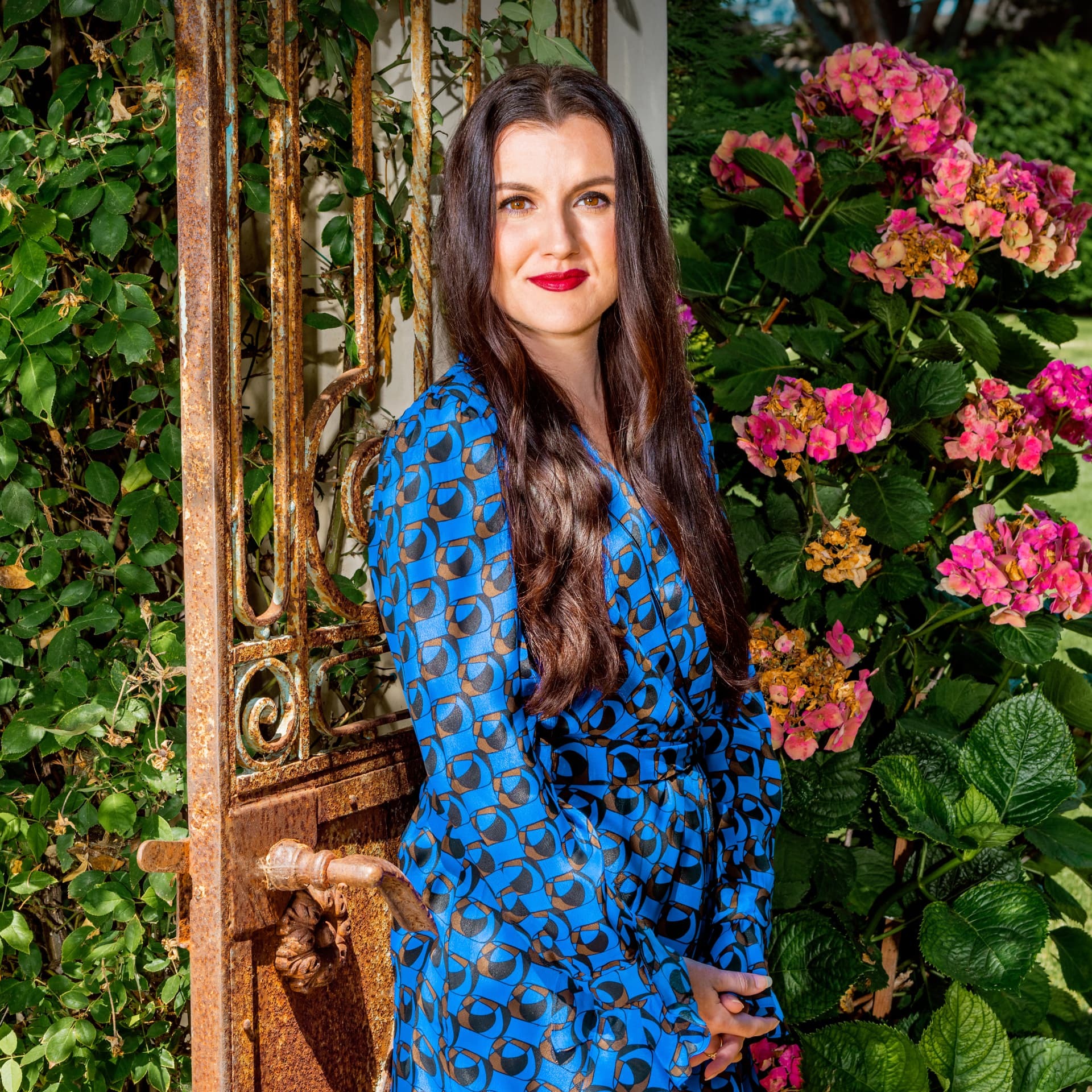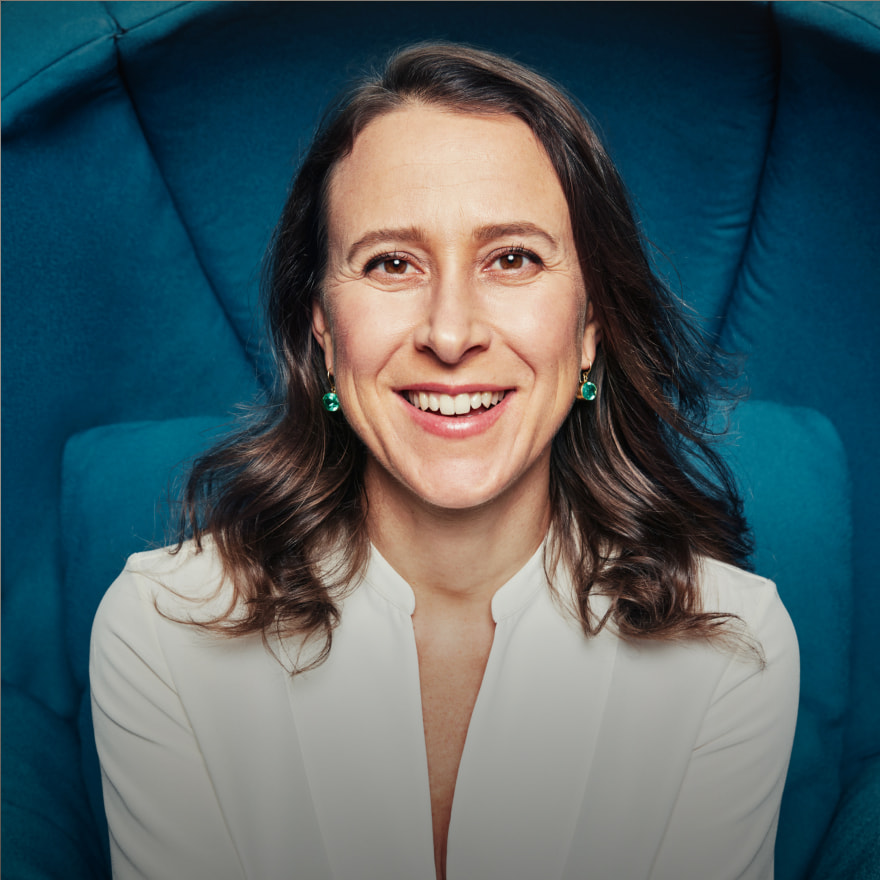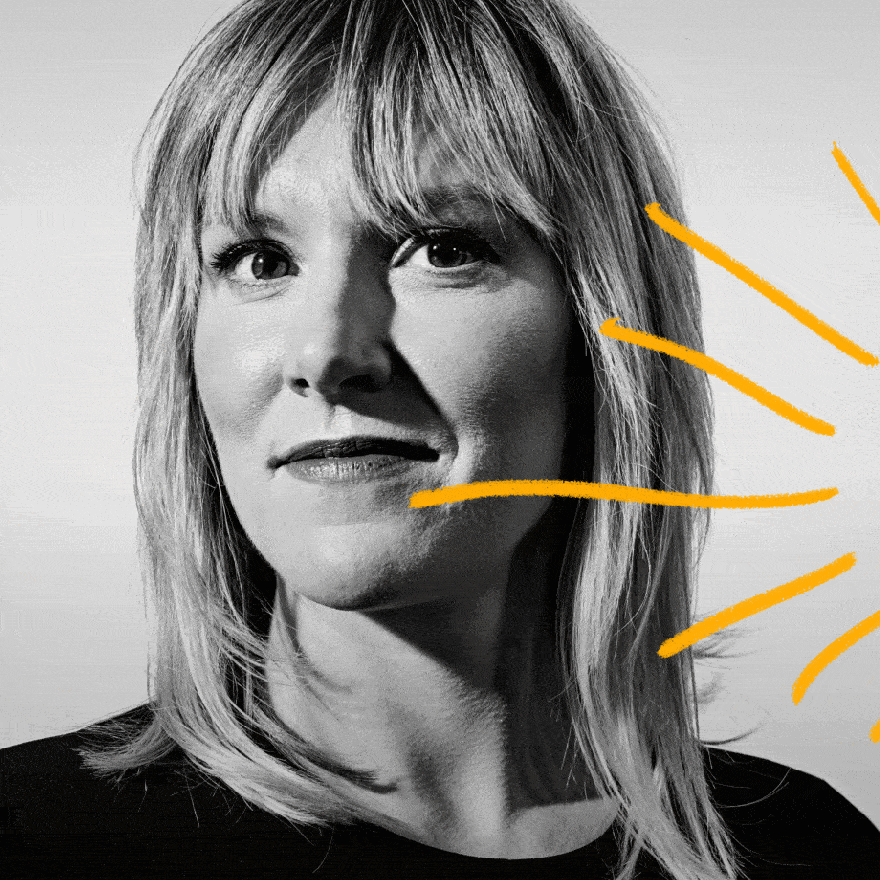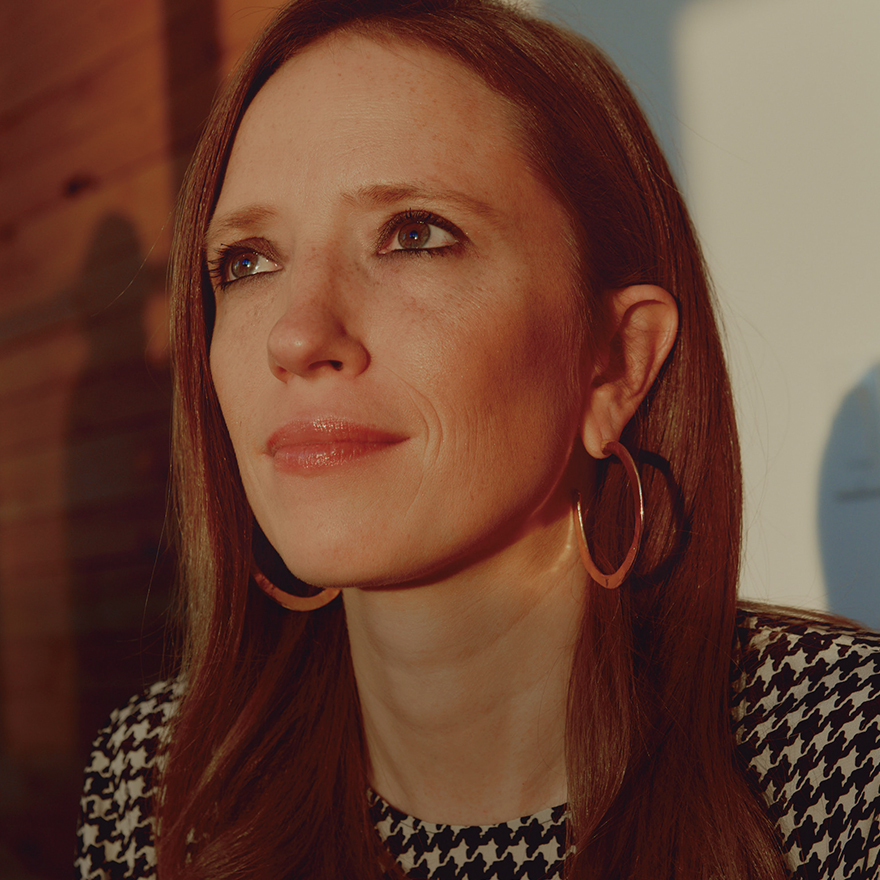Fidji Simo sat in a San Francisco hotel room, poring over details for the coming day. As CEO of tech upstart Instacart, the next morning—September 19, 2023—would be a landmark day. Simo was leading the company’s IPO, a historic moment that would be held at Instacart’s headquarters in downtown San Francisco. Nasdaq staff had flown in from New York City to oversee the event, and Simo’s own parents had made the journey from France. Though Simo was known for her equanimity, she was electric with anticipation.
Her husband, Remy Miralles, encouraged her to try to get some sleep. Miralles had been by Simo’s side throughout her journey: from a high schooler in France with big dreams to an MBA student in the United States; from helping scale Facebook, the world’s biggest social media network, to taking the helm as CEO at Instacart, where she led the company through a dramatic period of transition as she prepared it to go public. “Promise me one thing,” Miralles said. “Tomorrow, you’ll be pulled in a million directions. You’ll be focused on what comes next. Please, savor the moment.”
Simo knew he was right. It would be a mistake to breeze past this momentous occasion with her gaze set solely on the future. As the winds off the Bay whistled outside, Simo settled in to wait for the new day to begin.
Sète, population 44,576 (about the size of San Luis Obispo), is a bucolic fishing town in the south of France, on the Mediterranean Sea. For generations, Simo’s family, Sicilian by heritage, had worked in the fishing industry. Her grandfather, Rocco, was the captain of a fishing vessel; her father, Jacques, rose through the ranks to captain his own boat. They worked long, hard days, sometimes as long as 18 hours, heading out to sea at 2 in the morning and returning at 8 in the evening with a fresh haul of bass, sole, hake, monkfish, sardines and anchovies.
Meanwhile, Simo’s grandmother, Viviane, was a fishmonger who sold what her husband caught at a tiny shop in the center of town. Simo took pride in her family’s hard work and their crucial, if perhaps underappreciated, role in supplying food for the village and beyond. But she knew she would never follow in their footsteps. As a kid, though it thrilled her to join her dad at sea, she always got seasick, a malady she never outgrew. Simo preferred being on land and cherished her time in the city gardens with her sketchbook in hand, filling a blank page with drawings inspired by Gaudí and the Surrealists, or in her mother’s boutique, admiring her entrepreneurial spirit and the kind, authentic way she interacted with customers. Over time, Simo developed an interest in business and dreamed of one day launching one of her own.
One night, the radio Simo’s grandfather kept on the dining room table crackled to life—an emergency transmission. A fishing boat was in rough seas, in desperate trouble. While her father and other fishermen scrambled into boats to aid the rescue mission, Simo stayed by her grandfather’s side, listening as the captains worked together to organize the rescue, riveted by their composure under pressure.
The memory has always stuck with Simo—a demonstration of the power of leadership and community in a moment of crisis. As boat captains, Simo’s dad and grandfather often spoke of their responsibilities, not only in keeping their crews safe but making sure each person on board felt valued. They were the kinds of leaders who wouldn’t assign a task they weren’t willing to do themselves, never too regal to scrub decks or disentangle nets. “The crew comes before you, always,” Simo says, summarizing the ethos her dad and grandfather modeled. For her, this approach has been a lifelong priority. The world of tech may seem vastly distant from life aboard a fishing boat on the Mediterranean Sea, but for Simo, her childhood yielded lasting lessons.
After high school, when Simo left her hometown to go to business school at HEC Paris, Miralles went with her. The two had met as teenagers and formed a friendship that would evolve into a lifelong partnership. As she closed in on her master’s degree, Simo elected to take courses at UCLA, fulfilling a long-held dream of moving to the U.S. that she’d nurtured through an obsession with the Southern California TV drama “The O.C.” Again, Miralles joined her. Their decision to move overseas, far from their home and close-knit families, wasn’t made lightly. But Simo, like her parents and grandparents before her, had always been one to rush toward a challenge, not run away. What’s more, she had Miralles’ support, a confidence that would give her the courage to make bold decisions time and again in her career. And she was intrigued by what she viewed as a U.S. appetite for entrepreneurial risk-taking—in business and in developing new technologies.
On the flight to Los Angeles, she blasted the theme song to “The O.C.,” “California” by Phantom Planet, through her headphones: “California, here we come!” She knew the future would come with challenges, but sitting back in her seat, she relished the joy of it beginning.
After UCLA, Simo spent four years on eBay’s strategy team before moving to Facebook in 2011. The company had already seen explosive growth but continued to expand its scope. As VP of video, games and monetization, Simo tackled challenges with relish, defying skeptics at every turn. Few believed Facebook could monetize mobile, but Simo cracked the problem by introducing a robust advertising network to the Facebook App, which proved to be a turning point for the company. When there were doubts as to whether the company could compete with YouTube given its eight-year head start on video, Simo and her team built Facebook Live and Facebook Watch, pioneering new approaches to video streaming and generating massive engagement.
In time, Simo developed a powerful sponsor in CEO Mark Zuckerberg. Working alongside him at “the school of Zuck,” as she calls it, Simo learned crucial lessons about balancing long-term strategy and vision with a commitment to short-term execution. “A lot of great operators can do the day-to-day, nitty-gritty work, but don’t have vision,” Simo says. “And a lot of people have great vision, but can’t execute for the life of them. Mark has both. And that really shaped me.”
Zuckerberg’s faith in Simo was apparent when he gave her the reins to the flagship Facebook App, where she would manage a staff of 6,000. As Simo dug excitedly into the new challenge, however, she suddenly began dealing with a constellation of frightening physical symptoms: dizziness, nausea and frequent fainting spells. She was eventually diagnosed with a neuroimmune condition called postural tachycardia syndrome (POTS), which is not life-threatening but can be debilitating.
Determined to rise to the occasion of leading the Facebook App, Simo refused to let the diagnosis hold her back. Instead, she found creative ways of managing her symptoms in the workplace, like bringing a reclining chair into the boardroom to ensure her blood pressure didn’t drop during long meetings. Facebook rallied around her during this time—an outpouring of community support that echoed what she’d experienced as a child in Sète’s fishing scene.
Despite Simo’s successes and close relationships at Facebook, as a creative soul, she yearned to one day be a CEO herself. She viewed the CEO position as the ultimate canvas to shape a business following her own instincts and imagination. She was fascinated with the idea of solving a company’s most critical puzzles. In 2021, when she was approached by a major tech company in need of new ideas and fresh vision on its board, her ears perked up.
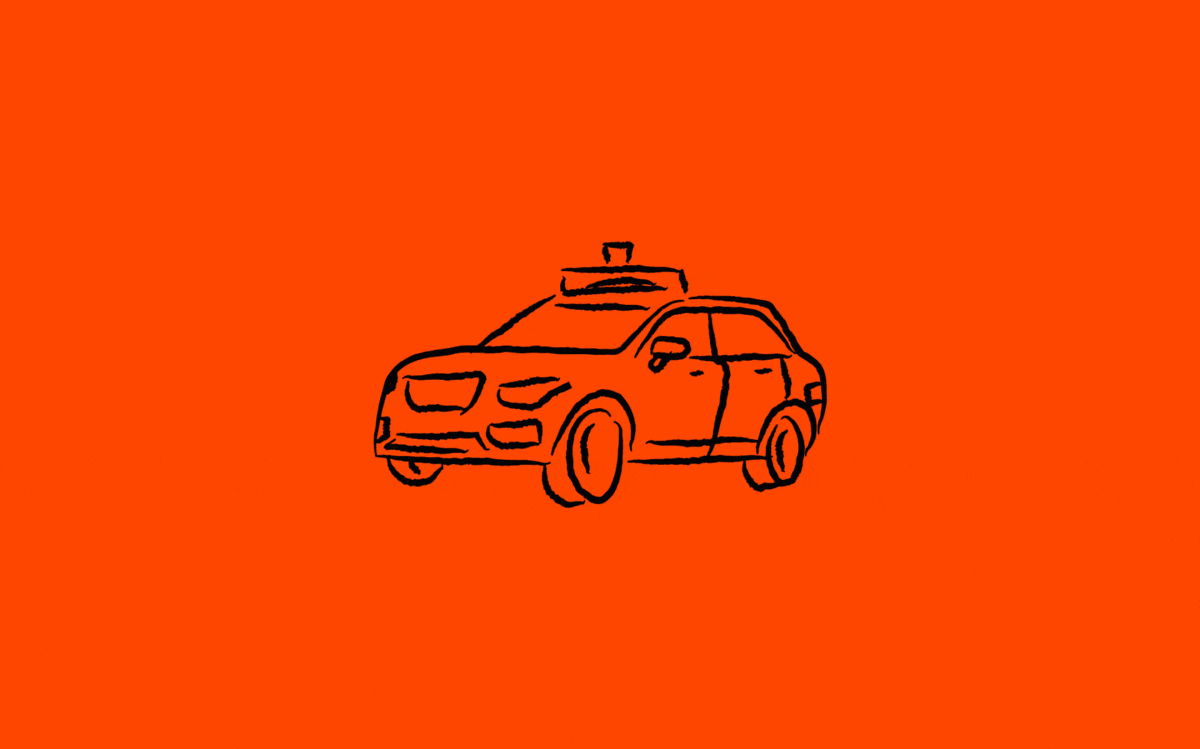
Instacart was founded in 2012 by Apoorva Mehta, Max Mullen and Brandon Leonardo. After an initial rejection, it famously secured a spot in Y Combinator when the founders ordered a six-pack of beer that was delivered to the partners. Michael Moritz, formerly a partner at Sequoia, led its investment in the company soon after.
Following nearly a decade of steady growth, Instacart became essential during the pandemic as shopping went digital, and its sales surged. But as quarantine waned and people returned to shopping in person, Instacart’s growth declined. The company recognized it needed to redefine itself in a post-COVID world. Founder-CEO Mehta was the first to identify Simo for the board, noting that her scaled operating experience and product expertise would be valuable as the company navigated the path forward.
While maintaining her role at Facebook, Simo joined Instacart’s board in January 2021 as the company was strategizing on how to expand its ambitions. “Instacart’s mission of helping people access food resonated deeply with me,” she says. “Growing up in a family who for generations harvested food from the sea and brought it ashore, it was this ancestral, deeply cultural connection.”
“Instacart’s mission of helping people access food resonated deeply with me,”
Fidji Simo
Later that summer, Instacart and Mehta began pursuing a successor for his role to lead the company into its next chapter—someone with a vision for Instacart’s future and experience running an organization at the scale the company hoped to achieve. Moritz, impressed with Simo’s board contributions, began championing her for the role. Recognizing her CEO potential and ambition, he wryly commented to Simo that she would grow old waiting for the chance at Facebook. “Michael had the wisdom of having seen so many people navigate this career moment,” Simo says. “He told me, ‘If one of your goals is to be a CEO, to make a difference and see what you can do when you can drive your own vision, Instacart is your canvas.’”
Despite the position’s appeal, Simo knew it came with pressure and risk. “At the time, Instacart’s gross transaction volume was declining by double digits,” Simo remembers. While Instacart’s success—and her own as its CEO—wasn’t guaranteed, Simo was drawn to the challenge of steering the company’s evolution.
After a series of visits from Moritz at her home to discuss the role’s challenges and potential—and bond over her husband’s recipe for madeleines—she was about ready to accept. When she asked Miralles his opinion, he encouraged her to listen to her instincts for where she would find joy. “That’s where you’ll do your best work,” he said.
In August 2021, Simo became CEO of Instacart, a seismic industry move that made headlines around the world. Now, the hard work could finally begin.
Simo was aware of the whispers in Silicon Valley that Instacart would never be profitable. As newly minted CEO, she was determined to prove skeptics wrong, as she had throughout her career.
Early in her new role as CEO, Simo observed a tension between Instacart and its retail partners, the grocery stores where Instacart shoppers shopped. To the retailers, Simo says, it wasn’t clear if Instacart was a friend or a “frenemy.” She recognized that Instacart was reliant on its retailers for success and sought to strengthen these relationships in a way that was symbiotic. If Instacart could help retailers thrive, she intuited, the company would also prosper.
To achieve this, Simo revamped Instacart’s company values and instituted a new leadership ethos known as Grow the Pie to help grocers improve their own processes—both in-store and online—via new technologies. Instacart partnered with over 100 grocery chains like Sprouts and Publix to build smooth, sleek, white-label websites that are individually branded but powered by Instacart. Now, whether a customer orders groceries through Instacart or a grocer’s site, both parties benefit.
One of Simo’s superpowers is innovating new products, and a major appeal of the CEO role was getting to push product visions forward. As part of its omnichannel strategy, Simo made the decision to acquire Caper AI, a startup offering AI-powered grocery carts. When an in-store customer places an item in a Caper Cart, the cart is able to scan it and add the price to a running tally. The screen serves as a payment terminal, so when a customer is done shopping, they can avoid the line and head for the parking lot. The cart is also outfitted with a screen where brands can suggest recipes and advertise products, a significant revenue opportunity for both Instacart and the stores.
“These changes have allowed Instacart to reach beyond its roots as a service fulfillment company into managing the full grocery shopping ecosystem.”
Fidji Simo
Once retailers were confident that their goals were aligned with Instacart’s, they found other ways to more deeply integrate, adding new online offerings that enabled customers to access every aisle of the store—including alcohol, produce and packaged goods—and to pay via a variety of payment methods, including EBT SNAP. “These changes have allowed Instacart to reach beyond its roots as a service fulfillment company into managing the full grocery shopping ecosystem, while partner stores also benefit,” Simo says. “It’s been absolutely thrilling to see.”
Simo recognized the critical role played not just by partner stores, but by Instacart’s shoppers. To understand their motivations and challenges, Simo tried her hand at being a shopper herself. The experiment was humbling. Finding parking at a San Francisco grocery store called Gus’s was in itself a daunting feat. Then, managing a customer’s particular dietary preferences presented another challenge. As Simo roamed the aisles trying to locate a specific brand of kombucha (a product that this fish-and-potatoes girl had never tried), a store manager came to her aid and helped her complete the order. “I got a sense for how resourceful the shoppers are and how difficult a job it can be,” she says.
Simo began holding regular one-on-one meetings with shoppers, too. She notes that Instacart’s shoppers vary demographically from other gig economy workers: about two-thirds are women and approximately half are parents. Simo says the shoppers provided “a tapestry of reasons” why they were drawn to Instacart, though for most of them the flexible hours—and locations—were key. One shopper had a severely disabled daughter and was able to clock in for short stretches when someone else was available to offer support at home. Another woman had always dreamed of traveling to all 50 states. Working for Instacart allowed her to have a job on hand wherever she traveled.
Simo made it her mission for Instacart to introduce new technologies that would increase shopper efficiency and boost their pay. Instacart began alerting shoppers to peak earnings days; prompted customers to increase tips when they rated a shopper five stars; created batch orders so that a shopper could grab items for multiple customers on a single trip to the grocery store; and built in-app way-finding technologies that allow shoppers to navigate aisles and collect items in a more efficient pattern. These efforts have largely succeeded; Shopper salaries, on a per-hour basis, have consistently notched up. “I’m proud that shoppers are now making more than they did in the past,” Simo says.
Get the best stories from the Sequoia community.
Simo was chosen to lead Instacart because investors believed she could grow the company and reimagine it, but also because they felt she could ready the company to go public. In late 2021, however, the tech industry was hit by a market collapse and subsequent IPO drought. Given this difficult climate, a less ambitious person might have shelved the prospect of going public altogether. But Simo was keenly aware of the hundreds of Instacart employees who had worked tirelessly for years, for whom an IPO could be life-changing, allowing them a cash liquidity she felt they’d clearly earned. Simo promised her employees that when the market grew receptive, Instacart would be one of the first companies to go public. To do so, however, Simo “quickly realized that we needed to show the world that this was an industry that was profitable.”
Ravi Gupta, a former CFO and COO at Instacart who became a partner at Sequoia in 2019, became a trusted advisor to Simo as she quickly got up to speed on where Instacart had been and put a strategy in place for the future. Recalling their conversations, Gupta says, “She’s built to be a CEO. She wants the ball. She wants the responsibility that comes with leadership.”
“She’s built to be a CEO. She wants the ball. She wants the responsibility that comes with leadership.”
Ravi Gupta
For two years, Simo worked with her team to pivot the company toward profitability. Product innovations—from batching orders to shopper way-finding—improved the margin on each order, and its revenue from advertising has grown significantly. Instacart now boasts more than 5,500 ad partners, including PepsiCo, General Mills and Unilever. It has introduced new ad formats such as shoppable display ads, and because Instacart (and its associated white-label sites) is a closed-loop platform, the company is able to serve up unique insights to partners about how their ads are driving sales. Instacart reported that ad campaigns drive an average 15% incremental sales lift—an almost unheard-of number.
In the market downturn, Simo had observed other companies try to hang onto their former valuations, concerned about the optics of a lowered figure. “They buried their heads in the sand and pretended nothing had changed,” she says. “I took a different approach. I faced reality straight-up, and I’m like, ‘Okay, yep, the markets have changed. We are not worth the same. That’s totally okay. Let’s embrace this new reality and grant stock for employees at a fair valuation.’ We’re focused on doing what’s right, not the thing that looks good.’”
By the summer of 2023, Instacart had hit five consecutive quarters of profitability. As the markets continued to warm, Simo kept her promise to her team, setting an IPO date for September, with an opening price of $30 per share. With more than $2 billion in cash reserves, Simo says Instacart’s IPO was less about raising money (and, in fact, was non-dilutive) than making sure that the company’s more than 3,000 employees would finally realize the fruits of their labor.
Usually, when a company goes public and hits the Nasdaq exchange, a few lead executives show up in New York City to ring the bell and celebrate. But Simo knew the company’s success was a result of the employees who had contributed throughout the years, and she wanted all of them to have the chance to participate in the festivities. So she asked Nasdaq officials to come to San Francisco.
The night before the IPO, her husband’s suggestion to be present resonated deeply. The next morning, as the company gathered in the employee cafeteria, now decked out with its CART ticker symbol, Simo circulated among employees, the executive team, the founders and their families, and felt her emotions rise. She and her husband had also invited their 8-year-old daughter Willow to join the occasion, as well as Simo’s parents and grandmother Viviane—the former fishmonger—who’d arrived from her hometown of Sète. “I started seeing the scene through their eyes,” Simo says. “I hadn’t made a big deal out of it, and I don’t think they really knew what to expect. But when I saw the tears in their eyes, it flipped a switch in me.” In particular, Simo was moved by the sight of her dad, Jacques—the hardened fishing captain who could pull a hook out of his hand without flinching—now radiant, bursting with pride and tearing up.
Cameras rolled, broadcasting the ceremony around the world, as Simo stood on stage with Instacart’s executive team and rang the bell, marking Instacart’s emergence as a publicly traded company. For 90 seconds, she clapped along with her colleagues, sharing the joy, accomplishment and pride of the moment. “And then right after the cameras turned off,” she says, “I was just a sobbing mess.”
Through her tears, Simo picked up a microphone and made an impromptu toast, shining a light on Instacart’s co-founders and talented workforce. “I had this immense feeling of gratitude,” Simo says, “because I realized how much of a privilege it was to lead a team like this, and work toward a mission that can make a difference in the world.” Simo says what gives her the most joy in business is finding the magic in others and celebrating it. To have the chance to big-up her hard-working team in front of their colleagues—and even their own families—swept her with another wave of happy tears. Finally, Simo welcomed her daughter, Willow, to join her on the podium, and as a chorus of flashbulbs popped, they both grinned—dreaming of the future, but fully present in the moment.
The art studio in Simo’s home, dubbed the flower room, is a space dedicated to her personal projects: paintings, sculptures and collages. Simo takes flowers by the dozens, hangs them up to dry and then uses their distinctive natural dyes as a material in her art. Simo’s health condition makes intensive exercise a no-go, so when she wants to tune out work stress, the flower room is her sanctuary. One recent Saturday afternoon, she huddled with Willow in the flower room, sculpting magic wands out of sticks and flowers. Together, they pretended to imbue each wand with special powers: levitating objects, stopping time.
Though Simo’s free time is limited, she squeezes every drop out of it, cherishing moments with her daughter and the occasional dinner out with Miralles. She also, bogglingly, has found the bandwidth to create the Metrodora Institute, which opened in April 2023 in Salt Lake City. Metrodora, named after a fifth-century female Greek physician, welcomes those living with diseases that many doctors fail to diagnose and often do not know how to treat. The center offers clinical care and conducts scientific research with the goal of developing cures for complex chronic conditions.
“Challenges can spur creation,” Simo says. It’s a motto she reiterates to her team at Instacart as the company continues to work to expand its scope and prove its durability in what remains a challenging environment for many public tech companies. One of the initiatives to broaden Instacart’s horizons relates to Simo’s interest in health care and biotech. “Eighty-five percent of health care costs come from treating chronic diseases, like diabetes and hypertension, that can be caused or made worse by diets that lack key nutrients,” Simo says. “It became obvious to me that a company like Instacart, which exists at the intersection of people’s relationship with food, has a role to play in health care.” Simo conceived of Instacart Health, a program that allows doctors to prescribe food as easily as they prescribe medication. Simo imagines a future where a doctor not only recommends that a patient eat healthier, but prescribes specific meals, and by the time that patient arrives home, the ingredients for the meal are waiting on their doorstep, delivered by an Instacart shopper.
But for now, here on a Saturday afternoon with her daughter, Simo’s job is to sculpt another magic wand and pass her special powers down to her own child. “I want her to see that everything is possible,” Simo says. “That’s the biggest gift that my parents gave me.” Though Simo’s family had no advanced degrees, Simo says their message to her never wavered: If you work hard and put your mind to something, you can accomplish anything. Now, Simo reflects on Instacart’s IPO, and her special moment on stage with her daughter. “I think that was when everything landed for her,” Simo says. “Like, ‘Okay, wow, this is a big moment. And Mom is right! We can do big things.’”
